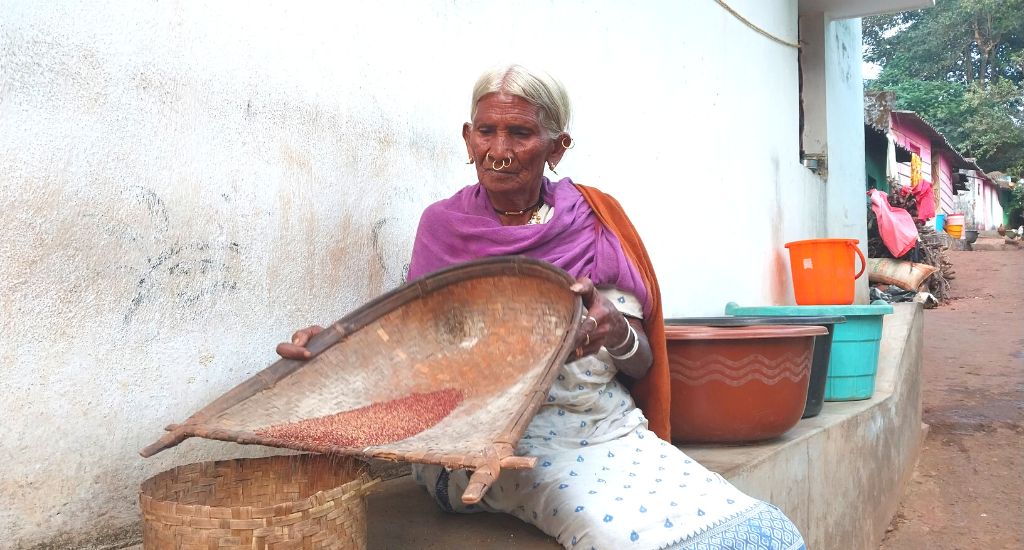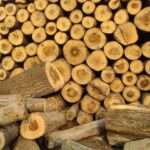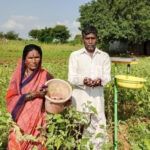Indian mothers are known to set aside small, spare cash and coins in containers, nooks and under mattresses. The small savings come good during exigencies. Tribal women living in the woody hills of Koraput district of Odisha do it too.
But their “cash” of choice is mandia—the Odia word for ragi or finger millet, the russet-coloured coarse grain that ties the tribe’s history and the people’s emotional right-now reality.
Mandia stored in circular bamboo silos, called “dudi”, is often used by Paraja women in a long-prevalent system of barter instead of money. Whenever they run out of cash, they take out some mandia and barter it for vegetables, cooking oil and soap. Also, for delicacies like sukhua (dried fish), or addictive treats like guraku, a type of red chewing tobacco paste.

This barter is called “kheja” in the native tongue. “Vendors come carrying a range of items. They take mandia and give me potatoes, tomatoes and red lentils in exchange. This helps,” said Kuni Kirshani, a landless farmer of Manbar village.
She is a sharecropper and cultivates mandia, suan (little millets) and paddy on two acres, giving off 50 per cent of the harvest to the landlord.
Hers is a hardscrabble life. To keep the spirits high, appease the gods and sing an odd ode or two to mandia, Paraja women brew their own heady drink—“landa”—with a mixture of rice and millets. The beverage ferments in a steel pot in Kirshani’s kitchen.
Millets the superfood
Raise a toast to “mandia” in 2023—the International Year of Millets. It is better done the Paraja way.
Also Read | How millet magic is empowering women in rural Odisha
The tribes of Koraput have been cultivating millet for millennia. Millets occupied a prominent place on a long list of wholesome, nutritious cereal grains—making up the diet of our ancestors—but it dropped from top of the food chain to below the breadline after modern global agricultural practices encouraged wheat and rice to bring food security.

In the process, people’s dietary habits got altered completely. They got used to chowing down boiled polished rice or supple rotis made of wheat flour, thereby downgrading a grain deep-rooted in human history to poor man’s food, and animal feed and fodder.
But what goes around comes around. The 21st century saw a meteoric spike in crippling diseases like diabetes and obesity concomitant with a sedentary lifestyle and a carbohydrate-rich diet. Scientists scrambled for a remedy and posited millets as grist for the mill. Millets are easy to digest because of their high fibre content, they are gluten-free and low in carbohydrate, and packed with essential minerals and micronutrients like amino acids, magnesium, calcium, zinc, iron, potassium, vitamins, and antioxidants.

The cereal guards against diabetes, blood pressure, constipation and obesity. The label superfood—or nutraceutical—may sound fancy, but it sits well with millets. And hence, millets are back in the farms and on people’s plates.
Cashing in on millets
The growing demand for millets has come to sit well with millet growers in Koraput.
Almost every afternoon, Nilabati Mali sits outside her home in Maliguda village picking small stones from fistfuls of mandia on a flat bamboo tray. Her family owns four acres and grows mandia and suan. The elderly woman barters millets for onion, garlic, vegetables and dried fish.
Also Read | Collective enterprise fights malnutrition with millets
Padmaja Ravula, senior scientist-gender research at ICRISAT, said “Millets don’t need intensive labour. Women carry out post-harvest processing. As they are small-sized grains, patience is required. Women also decide how much quantity should be set aside for consumption, sold off in markets or bartered for goods,”.

In Koraput town, women greengrocers wearing striking nose pieces and small-time traders bartering suan and mandia are a common sight.
In Lamtaput block, where the Gadaba tribe is predominant, the Integrated Tribal Development Agency runs programmes to add value to suan that has a big market in Uttar Pradesh and Rajasthan, where it is consumed during religious fasts. The processed little millet fetches Rs 80 to Rs 150 a kg.
Easy to grow, hard to process
Millets are minor cereals of the grass family—a hardy, self-pollinating crop that grows well in extreme weather conditions and in diverse, small-scale, low-input farming systems.

Crops survive in less fertile soil, hilly terrains, little rain and high temperatures, and adjust to climate shocks.
They are easy to grow, but hard to process: sheave, stoke, thresh, winnow. It’s common for tribal families to have small pits outside their homes for pounding millets with a wooden pole.
“As processing little millets is an arduous task, women prefer to barter the produce or sell it,” said Manas Mohanty, senior district coordinator of Kalinga Institute of Social Sciences.
Millet grains have a long storage life, some stay edible a dozen years from the time they were harvested. “If kept carefully, mandia stays perfect for years. I exchange it at grocery shops in the village,” said Kailash Muduli, tending her field and cutting finger millet panicles with a sickle.
Also Read | Millets travel from tribal farms to dinner tables
In Machhara village, shopkeeper Rajendra Nag hands over two packets of bathing soaps priced at Rs 10 apiece to Jhunu Takri for a kilo of mandia. An old tradition continues.
The lead image at the top shows Nilabati Mali using a bamboo tray for cleaning ragi or mandia (Photo by Deepanwita Gita Niyogi)
Deepanwita is a journalist based in New Delhi. An alumna of Asian College of Journalism, she writes about rural development, gender and climate change.








